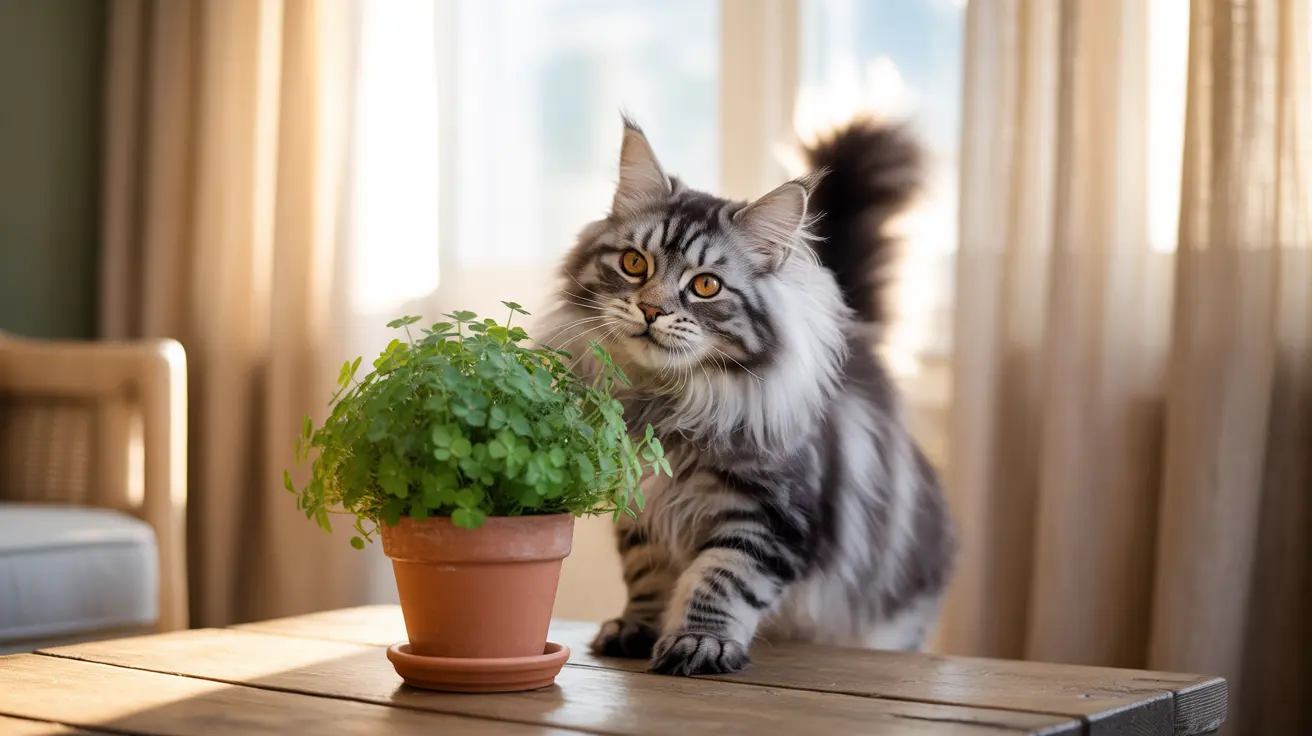Understanding Oxalis and Its Toxic Properties
Oxalis, with its distinctive clover-like leaves and delicate flowers, contains soluble oxalate crystals throughout all parts of the plant. These crystals are the primary source of toxicity for cats. When ingested, these compounds can bind with calcium in your cat's bloodstream, potentially leading to serious health complications.
The plant's toxic components include:
- Soluble oxalates
- Oxalic acid
- Oxalate salts
Recognizing Symptoms of Oxalis Poisoning
If your cat has consumed any part of an Oxalis plant, watch for these warning signs:
Immediate Symptoms
- Excessive drooling
- Vomiting
- Diarrhea
- Loss of appetite
Advanced Symptoms
- Lethargy and weakness
- Tremors
- Changes in urination patterns
- Kidney-related complications
Treatment and Emergency Response
If you suspect your cat has ingested Oxalis, immediate action is crucial:
- Remove any remaining plant material from your cat's mouth
- Contact your veterinarian immediately
- Do not attempt to induce vomiting without professional guidance
- Preserve a sample of the plant for identification
Veterinary treatment may include:
- Induced vomiting (if appropriate)
- Administration of activated charcoal
- IV fluid therapy
- Calcium supplementation
- Kidney function monitoring
Prevention and Safe Alternatives
The best way to protect your cat from Oxalis poisoning is through prevention:
Preventive Measures
- Remove all Oxalis plants from your home
- Keep outdoor Oxalis out of your cat's reach
- Research all new plants before bringing them home
- Create cat-friendly garden spaces
Safe Plant Alternatives
- Spider plants
- Boston ferns
- Cat grass
- Swedish ivy
Frequently Asked Questions
Is Oxalis (shamrock plant) poisonous to cats and what symptoms should I watch for?
Yes, Oxalis is poisonous to cats. Key symptoms include drooling, vomiting, diarrhea, lethargy, and in severe cases, kidney problems. The toxicity comes from soluble oxalate crystals that can cause serious health issues when ingested.
What should I do if my cat eats part of an Oxalis plant?
Contact your veterinarian immediately. Don't induce vomiting at home unless directed by a professional. Remove any remaining plant material from your cat's mouth and bring a sample of the plant to the vet if possible.
How does Oxalis poisoning affect a cat's health and kidneys?
Oxalis poisoning can cause calcium depletion in the bloodstream and potentially lead to kidney damage. The soluble oxalates bind with calcium, which can affect kidney function and cause various systemic issues.
Can I safely keep Oxalis plants in my home if I have cats?
It's not recommended to keep Oxalis plants in homes with cats. The risk of poisoning is significant, and there are many pet-safe alternatives available for indoor decoration.
What are safe plant alternatives to Oxalis for homes with cats?
Safe alternatives include spider plants, Boston ferns, cat grass, and Swedish ivy. Always verify plant safety through the ASPCA toxic plants database before introducing new plants to your home.
Remember, while Oxalis poisoning can be serious, awareness and prevention are your best tools for keeping your cat safe. If you suspect your cat has been exposed to Oxalis, don't hesitate to seek veterinary care immediately.






